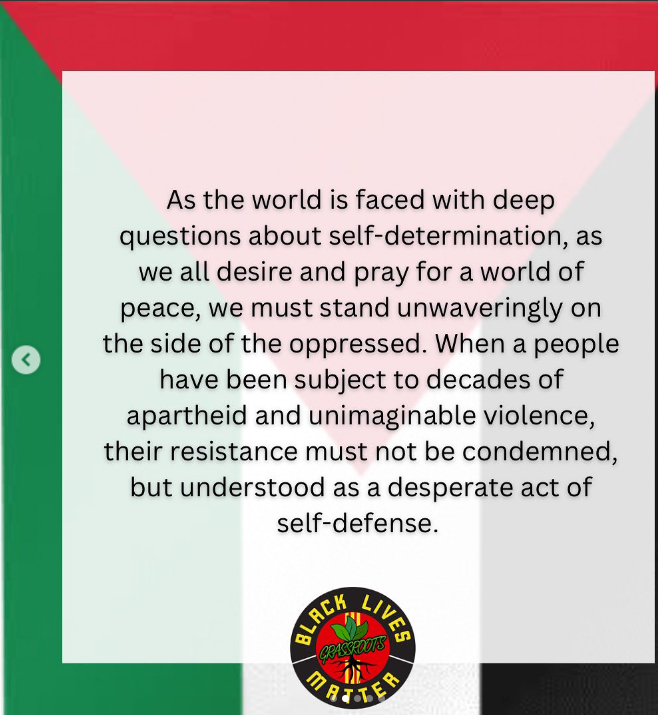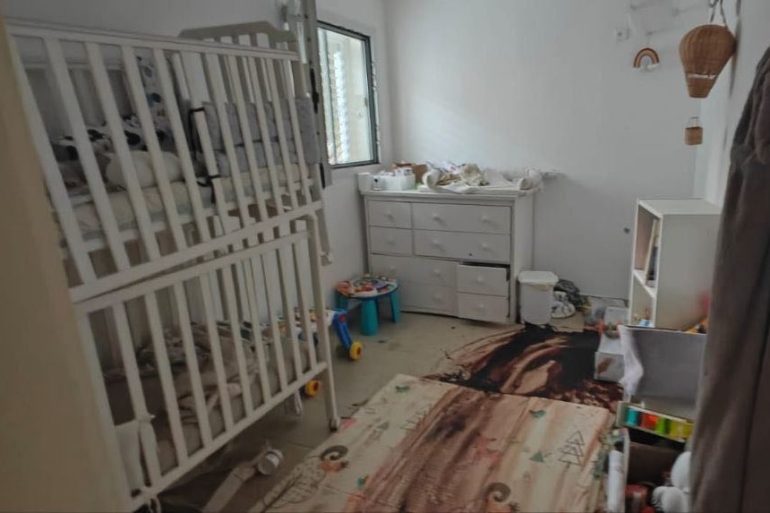Among the politically litany of unserious analogies used by anti-Zionists, one of the worst is the imposition of US racial dynamics onto the Israeli-Palestinian conflict.
One high-profile instance where such a comparison was exposed as a fraud involves British actress Maxine Peake’s comments in 2020 claiming that the police tactic of kneeling on a suspect’s neck – which resulted in George Floyd’s murder – was “learnt from seminars with Israeli secret services”. Peake eventually apologised, and the outlet which published Peake’s libel, the Independent, admitted her allegation was untrue.
However, the conflation of the two issues is still common among some progressive anti-Israel activists.
The most recent example appeared in the Guardian, in an op-ed by Nasrine Malik (“Pro-Palestine rallies aren’t ‘hate marches’ – they’re an expression of solidarity, helplessness and frustration”, Nov. 6). First, as we demonstrated in a post yesterday, it is indeed apt to refer to the demos as ‘hate marches’. Indeed, just today, The Telegraph revealed that half of the groups organising this Saturday’s pro-Palestinian march in London have links to Hamas.
But, what really caught our eye in the piece was this, where she tried to explain why the pro-Palestinian movement putatively resonates so widely across the intersectional left:
The Palestinian cause has long been part of an interconnected struggle for self-determination and equality for the international left. But increasingly it also sits at the intersection of contemporary global and economic discontents – and has become incorporated into the movement for social and racial justice. In 2021, Black Lives Matter [BLM] released a statement announcing “solidarity with Palestinians”; murals of George Floyd appear in Gaza and the West Bank.
First, CAMERA published a thoroughly researched report on the degree to which Black Lives Matter movement is compromised by antisemitism.
Moreover, and this of course will be quite inconvenient to Malik, while the body count of the Hamas massacre was still being tallied, BLM groups in Los Angeles, Chicago and DC issued statements not just “standing in solidarity with Palestinian” civilians in Gaza, but literally supporting Hamas’s barbarism. BLM Chicago tweeted an image of a Hamas paraglider with a Palestinian flag attached to his parachute and the caption “I stand with Palestine.”, before evidentially deleting the tweet following criticism.
The far left are showing their true colors. Here Black Lives Matter Chicago are celebrating the butchers who arrived on paragliders at a music festival and brutalized and murdered hundreds of defenseless young people at a music festival. Difficult to comprehend. pic.twitter.com/lduVCnzgdj
— Eoghan McCabe (@eoghan) October 10, 2023
Note that the tweet (which they eventually deleted), which BLM Washington D.C. retweeted, was posted three days after Hamas’s massacre, when the full extent of the terror group’s antisemitic barbarism, which included the murder, torture and mutilation of Jewish men, women, children and even babies was widely known.
Further, BLM Grassroots in LA wrote on Instagram (in a post that is still on their IG page) that “Their [Hamas’s] resistance must not be condemned but understood as a desperate act of self-defense,” “As a radical black organization,” the post continued, it sees “clear parallels between black and Palestinian people.”

Is this the parallel between the the two movements that Malik is referring to? Is this the concept of intersectionality at play?
The Guardian columnist continues by dishonestly evoking George Floyd, not as explicitly as Maxine Peake, of course, but the words clearly seem designed to remind readers of the horrific clip of Derek Chauvin kneeling on Floyd’s neck until he died.
Social media has made this internationalism more accessible. The heavily armed soldier or policeman with his foot on someone’s neck…these images resonate with the past and present of people who have experienced power behave with impunity, who sense in their own societies a disparity in the value of people’s lives.
The paragraph concludes thusly:
There is a universal simplicity to the conflict that transcends political ideology – about the fundamental human right to full nationhood, to live in your home in safety and with dignity. As the journalist Ta-Nehisi Coates recently explained in an interview, after he visited the occupied territories, what he saw revealed to him “just how uncomplicated it actually is”. “You don’t need a PhD in Middle Eastern studies,” he said, “to understand the basic morality of holding a people in a situation where they don’t have basic rights.”
However, if you watch the full interview by Coates – a US author and journalist who’s often framed as an ‘expert’ on racism – which was conducted after the Oct, 7 massacres, he not only fails to mention the word “Hamas” even once, or condemn the antisemitic aadism on that day, but spends the entire time demonising Israel as a uniquely (Jim Crow-style) racist polity, framing Israel as the white oppressor and Palestinians as the oppressed people of colour.
While saying nothing about Hamas terrorists literally murdering babies in their cribs, burning them alive and torturing (and beheading) children, Coates peddles the blood libel in claiming that “they [Israel] believe bombs should be dropped on children”.
The following testimony concerning Hamas’s brutality, including towards children, is based on actual (un-edited) video footage which was released by the IDF to international journalists and high ranking political officials, such as US Secretary of State Anthony Blinken.
WARNING: Blinken’s description of the Hamas atrocities he witnessed is extremely disturbing:
Secretary of State @SecBlinken shares testimony of Hamas's atrocities:
"A family of four. A young boy and girl, 6 and 8 years old, and their parents around the breakfast table. The father's eye gouged out in front of his kids. The mother's breast cut off, the girl's foot… pic.twitter.com/CoUBh9v13o
— Aviva Klompas (@AvivaKlompas) October 31, 2023
On CNN, host Jake Tapper was shown some of the forensic evidence of victims of the Hamas massacre, which included at least one case of an adolescent girl being beheaded. Again, WARNING: the following blurred photo, taken by a CNN crew at the Israeli Center for Forensic Medicine, depicts the dead body of a burnt and beheaded adolescent girl. (3:30 of this video)

For thirty minutes, Coates had the opportunity to decry the anti-Jewish racism that fueled such depravity, but said nothing.
The scholar Yascha Mounk wrote the following in a recent Times column titled “Obsession with Identity has left too many blind towards Hamas”:
The world is not neatly split into Manichean binaries that pit colonisers against the colonised or white people against people of colour. There are moral limits we must obey even if we believe our cause to be righteous. And nothing absolves us from the responsibility to pick our allies wisely, however loudly they might claim to speak on behalf of the oppressed.
He later added this:
The lack of empathy for Jewish victims in significant segments of the cultural and academic establishment is all the more remarkable since it stands in such marked contrast to many of the slogans that the left has embraced over the course of the past decade. When it comes to Hamas’s sadistic rampage, it seems that silence is no longer violence, and that the concern for “microaggressions” can peacefully coexist with the celebration of some rather macro murders
The fact that the Guardian columnist buys into such propaganda – projecting America’s history with white racism against black Americans onto the war between Israel and the antisemitic terror group – again reveals the intellectual poverty that infests a segment of the British media establishment.






In my opinion, and from what I see, all the lands that muslims inhabit and dominate, they stole from others.
So Malik sees no wrong in children’s heads being pulled off in front of their parents – and The Grauniad is happy to publish her views.